Many feel that art is a nonessential luxury, and perhaps it is for some. But here’s the tricky part: when art is not present – when it’s not before one – there’s no
Many feel that art is a nonessential luxury, and perhaps it is for some. But here’s the tricky part: when art is not present – when it’s not before one – there’s no sense that something is missing, something essential, like the hole in a bagel. Art is like silence: it’s not missed when surrounded by background noise – traffic in the street, appliances at home, chatter among strangers. Precious silence, unrecognized unless one is immersed in a forest or mountain valley, so quiet it’s palpable. The gift of art, like that of silence, has the capacity to touch hidden yearnings for love and beauty and sadness and adventure, as well as the suppressed torments of anger and rage, bringing humanity in all its complexity to the surface. Art connects to an intangible richness that reaches deeply within us, but often loses emotional authenticity when explained. Its power is rooted in silence.
Art is like silence: it’s not missed when surrounded by background noise – traffic in the street, appliances at home, chatter among strangers.
Perhaps I’m a biased lover of art. I was raised in a family of artists and lucky enough to have been surrounded by art my entire life. My mother and sister painted and sculpted – my mother in stone and my sister in metal – and my father was a world-class cellist. My wife and children and their families are artists in one form or another.
I’m a collector by nature, and for the last 25 years have collected Inuit sculptures. I knew nothing about Inuit art created by the people in Arctic Canada until after a glorious day of skiing in Vail when I walked by the Alaskan Shop and saw their sculptures displayed in the window. I loved the green serpentine stones with dark veins and shapes that danced before my eyes. I entered the shop and learned that seeing wasn’t sufficient: the carvings begged to be touched to transfer their life into me. I saw and felt a new world glitter before me.
The gift of art, like that of silence, has the capacity to touch hidden yearnings for love and beauty and sadness and adventure, as well as the suppressed torments of anger and rage, bringing humanity in all its complexity to the surface.
I’ll be more detailed in my essay collection that I’m hoping to publish soon. Here and in subsequent blogs I’ll gleam the surface.
I acquired a sculpture many years ago by Abraham Anghik, a fiercely imaginative, skillful and prolific Inuit artist from a family of sculptors. I’m not sure what Anghik called this piece, if anything, but I call it “Beneath the Surface.” The sculpture represents a person, possibly him, as an iceberg. Some 80% of each iceberg resides under the water, rendering the submerged ice a blur – often in brilliant greenish-turquoise – in clear water. Anghik sculpted a handsome face on the top of the sculpture, the part of the iceberg above the water for all to see. But the middle and lower third of the sculpture, the submerged part of the iceberg, has caverns inhabited by figures looking troubled – invisible demons. Who are these demons beneath the surface, unnoticed, or are they demons at all? For me they are the demons that rule the individual’s private life, perhaps the source of fear or misery or shame. Guesses, of course, which may differ for each viewer.

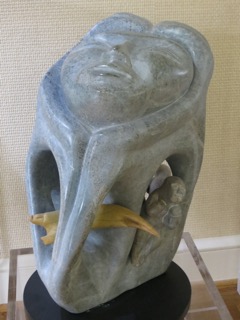
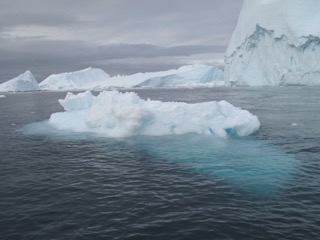
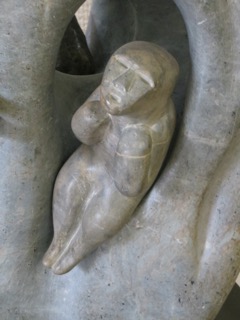
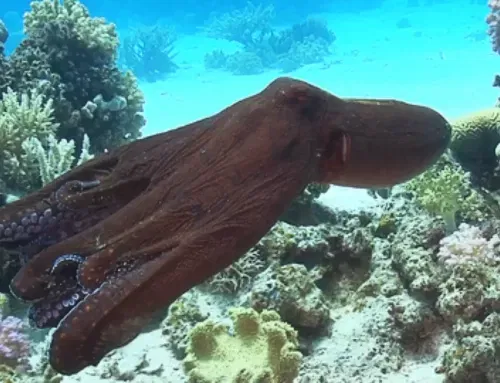


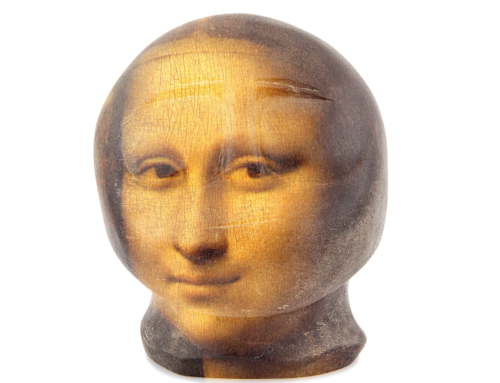

A beautifully written piece that really speaks to me, and reminds me how fortunate I have been to be able to be surrounded by art. I had a brother who was an artist, and all of his friends, and many works of theirs are on my walls. I was encouraged to play the piano by an aunt who had taught at Juilliard, and of course my parents, and to listen to music, and to let it engulf me. It is part of me. I wish everyone could know the joy and thought that it gives to one. Thank you, Joram, for reminding me how lucky I have been.
Thanks, Sonia. Glad you liked the blog!
Joram